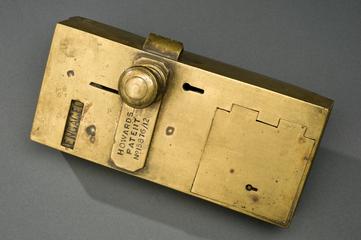
Guyton de Morveau-type disinfectant bottle, France, 1777-1785
- maker:
- Dumotiez Frères




Guyton-Morveau disinfectant bottle, 'fumigator', cased, boxwood, French
The label on the bottle translates from French as “Portable Apparatus by M Guyton-Morveau to disinfect the air, prevent contagion and stop its progress”. Louis Bernard Guyton de Morveau (1737-1816) was a lawyer turned chemist who invented this disinfectant bottle as part of his research into disinfection.
Confident enough to put his theories into practice he famously helped to disinfect the vaults of Dijon cathedral in 1773. Moreau found that putrefaction of bodies stored in the vaults gave off a strong and unpleasant smell. At the time it was believed that air polluted by decomposing bodies – as well as other noxious smells – could cause disease. This was the so called ‘miasma’ theory of disease. Morveau reasoned that putrefaction gave off large quantities of ammonia, an alkali, which could be neutralised by hydrochloric acid. He later used chlorine and developed portable bottles to produce the gas. This bottle would have contained manganese oxide in a powdered form to which hydrochloric acid would have been added to create the disinfectant.
Details
- Category:
- Public Health & Hygiene
- Collection:
- Sir Henry Wellcome's Museum Collection
- Object Number:
- A99551
- Materials:
- bottle, glass, case, boxwood and case lining, paper
- Measurements:
-
overall: 165 mm x 95 mm x 95 mm, .3492 kg
- type:
- disinfectant bottle
- credit:
- Hirzbrunner




